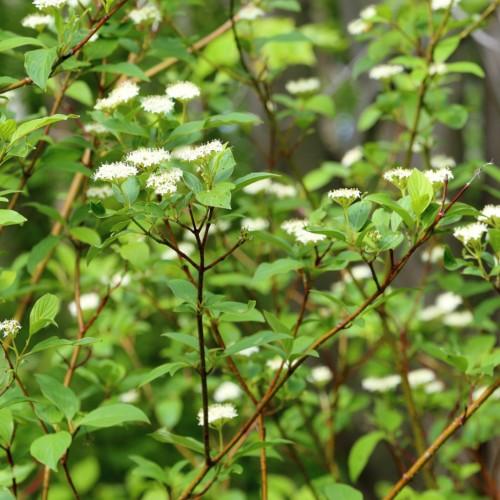
red twig dogwood
Cornus sericea 'KLM RR' ERIKA THE BLONDE
Cycle:
Perennial
Watering:
Frequent
Hardiness Zone:
3 - 7
Flowers:
Flowers
Sun:
Full sun,part shade
Leaf:
Yes
Growth Rate:
Low
Maintenance:
Moderate
Care Level:
Medium
watering
Water newly planted Red twig dogwood (Cornus sericea 'KLM RR' ERIKA THE BLONDE) at least once a week for the entire growing season, providing 2 inches of water each time. Once established, this type of dogwood can tolerate dry conditions and only needs watering during severe drought. However, during extended periods of dry weather, the plants still benefit from occasional watering to keep them thriving. For established plants, water every 2 to 4 weeks during the growing season, providing 1-2 inches of water at each session. This fast-growing shrub requires plenty of water during the active growing season for maximum growth and flowering.
sunlight
Red twig dogwood (Cornus sericea 'KLM RR' ERIKA THE BLONDE) grows best in partial shade, receiving 4-6 hours of sunlight daily. It prefers a sunny spot in the morning and some shade later in the day. Red twig dogwood is an excellent choice for a spot that gets some morning sun, but then has some protection from hot afternoon sun. This shrub also does well in complete shade, but produces fewer berries and less colorful stems.
pruning
Pruning for Red Twig Dogwood (Cornus sericea 'KLM RR' ERIKA THE BLONDE) is recommended to be done in late winter or early spring, typically between February and April. The plant should be pruned back by approximately 1-third to 1-half of its total height and width each year. During pruning, it is important to make each cut just above a bud so that the buds from the old wood are able to grow into new branches and can contribute to the overall shape of the shrub. Pruning of this plant should be done carefully as the foliage and branches are more brittle than other species. This can lead to a high risk of breakage while pruning.
